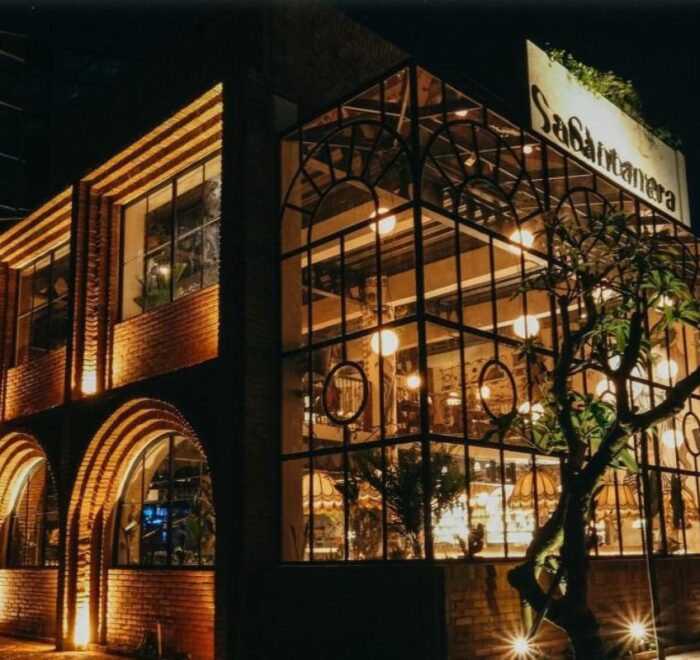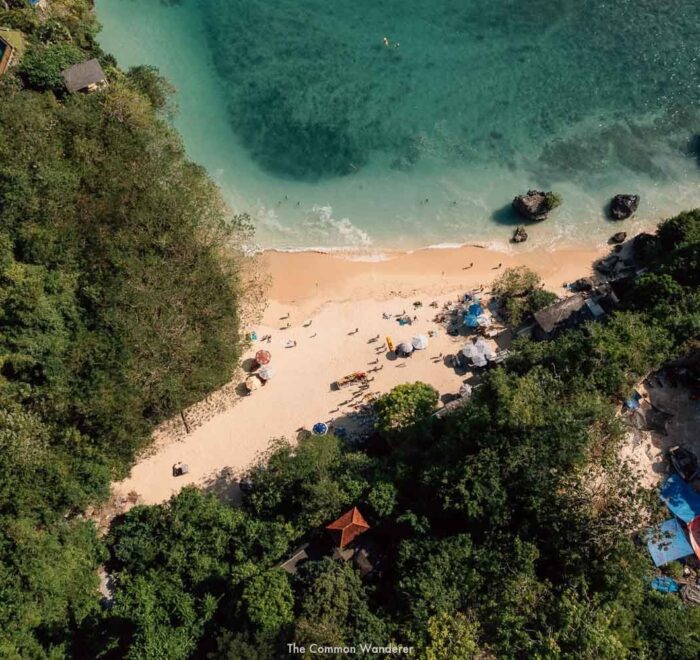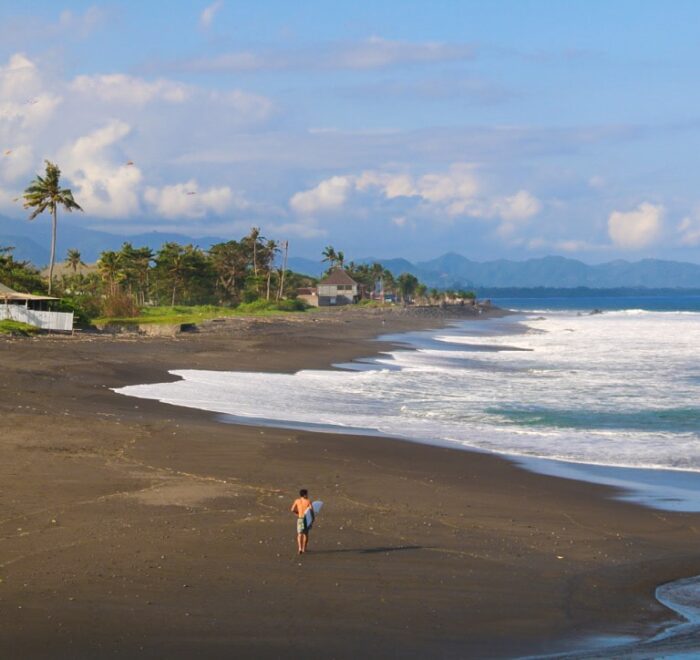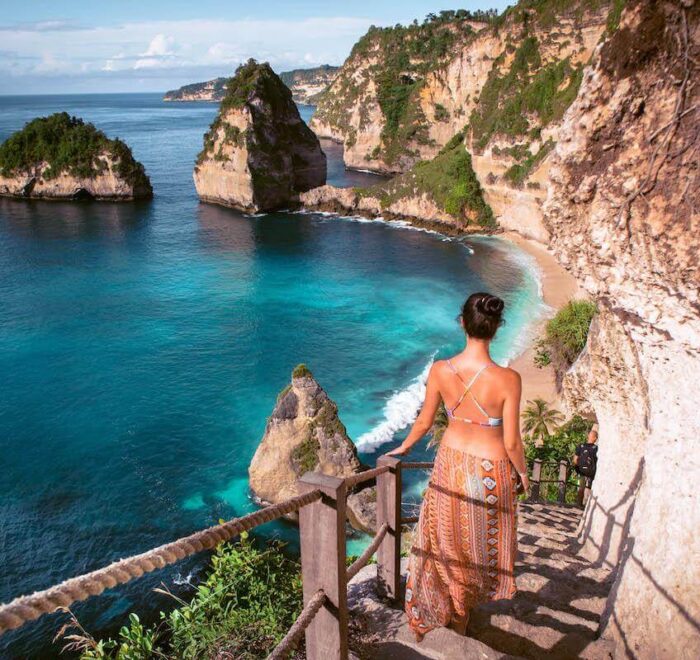The Jatiluwih Rice Terraces in Bali are a UNESCO World Heritage site known for their stunning landscapes and traditional irrigation system. Located in the Tabanan Regency, these terraces offer visitors a serene and immersive experience unlike any other. In this article, you’ll learn about the best times to visit, how to get there, and what activities you can enjoy in this beautiful destination.
Key Takeaways
- Jatiluwih Rice Terraces offer a quieter, more traditional experience compared to the popular Tegallalang terraces, making it perfect for those looking to immerse themselves in Bali’s cultural heritage.
- The best times to visit Jatiluwih are during the vibrant rainy season or the golden harvest months, with early mornings providing the ideal conditions for photography and exploration.
- Visiting Jatiluwih involves options like hiring a private car with driver, renting a scooter, or joining organised tours, all of which allow you to appreciate the beautiful landscapes and connect with local culture.
Where Are the Jatiluwih Rice Terraces?
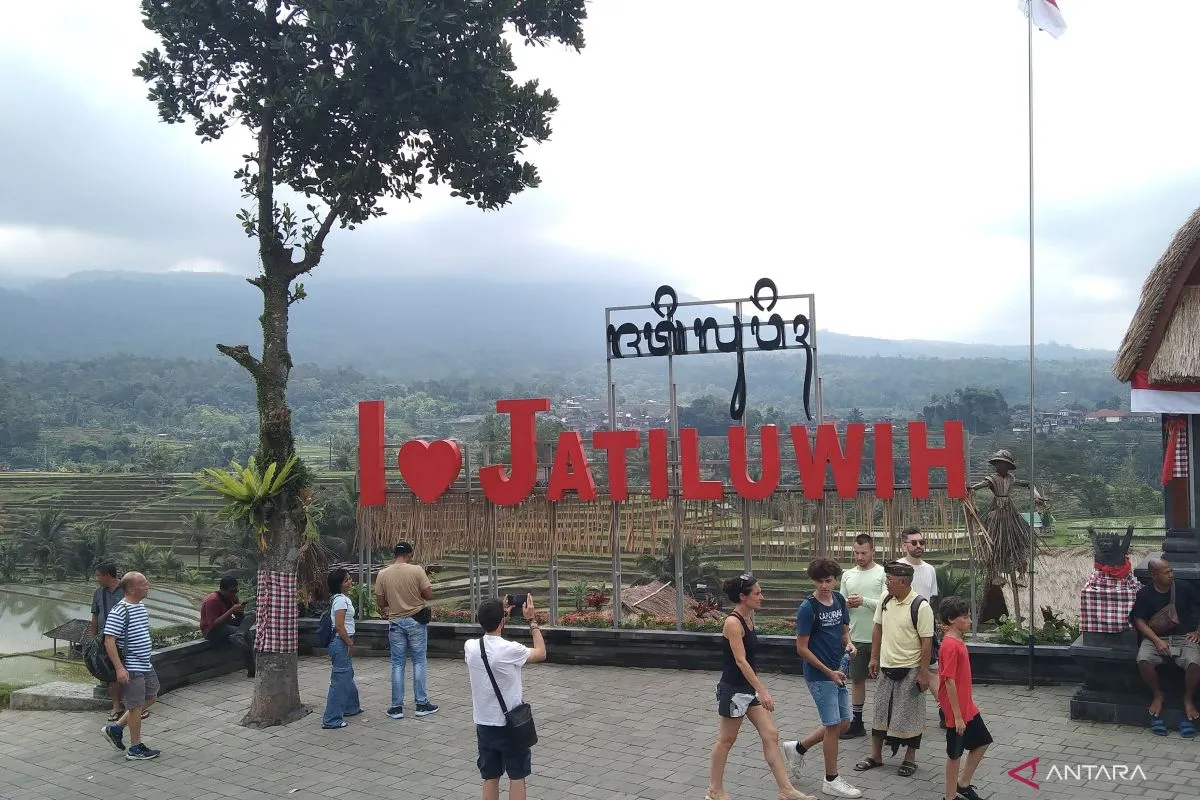
source : bali.antaranews.com
The Jatiluwih Rice Terraces are situated within the Tabanan Regency of Bali. Renowned for its serene and traditional environment, it offers a stark contrast to the island’s bustling party scenes. Jatiluwih is not just a destination; it’s a journey back in time to Bali’s cultural roots, where the pace of life is slower and the connection to nature is profound.
Often considered the most famous rice terraces in Bali, Jatiluwih stands out for its expansive landscapes and historical significance. Unlike the Tegallalang Rice Terraces, which are known for their accessibility and crowds, Jatiluwih offers a more tranquil and immersive experience. Here, the green rice paddies stepped along the contours of the Batukaru mountain range create a stunning visual.
Getting to Jatiluwih Rice Terraces
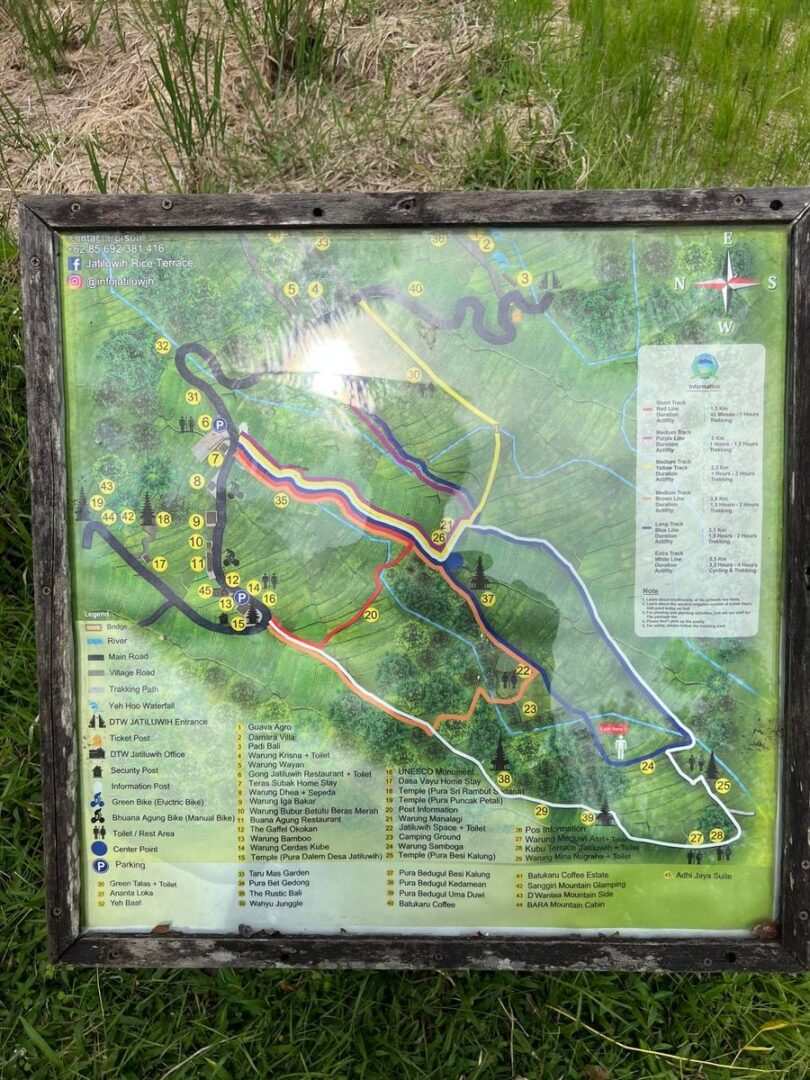
Source: wikiloc.com
Getting to the Jatiluwih Rice Terraces is an adventure in itself. Hiring a private car with a driver is the most convenient and flexible option, allowing you to set your own pace and create a personalised itinerary. This option allows you to enjoy the journey to the stunning rice terraces without the hassle of navigating Bali’s often challenging roads.
Alternatively, renting a scooter is another popular choice, especially if you’re traveling from Ubud, which is about an hour’s ride away. However, be prepared for some rough patches and always ensure you have a physical International Driving Permit (IDP). While ride-sharing apps might seem convenient, they are not recommended for this destination due to the difficulty of finding a return ride.
Booking an organised tour offers a more structured experience, often including historical and cultural insights that enrich your visit. Whether driving, riding, or joining a tour, the journey to Jatiluwih is an adventure, offering glimpses of Bali’s lush landscapes and charming villages.
Best Time to Visit Jatiluwih Rice Terraces
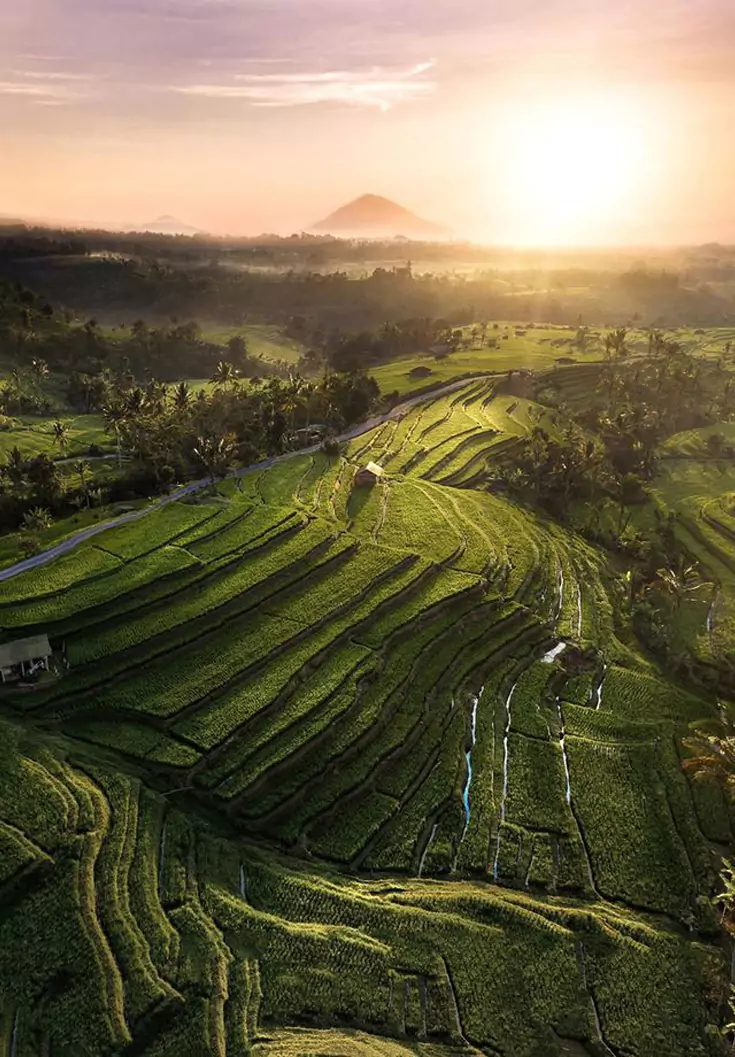
Source: heybali.info
The timing of your visit to Jatiluwih can significantly impact your experience. The rainy season from February to April is ideal when the rice paddies are most vibrant. Alternatively, the harvest season in May and June provides a different beauty with golden fields of rice stalks ready for harvest.
Visiting early in the morning, just after sunrise, offers the best light and fewer crowds. The soft morning light casts a magical glow over the terraces, making it an ideal time for photography and peaceful exploration. Additionally, avoiding the midday heat makes trekking more enjoyable.
Opening Hours and Entrance Fees
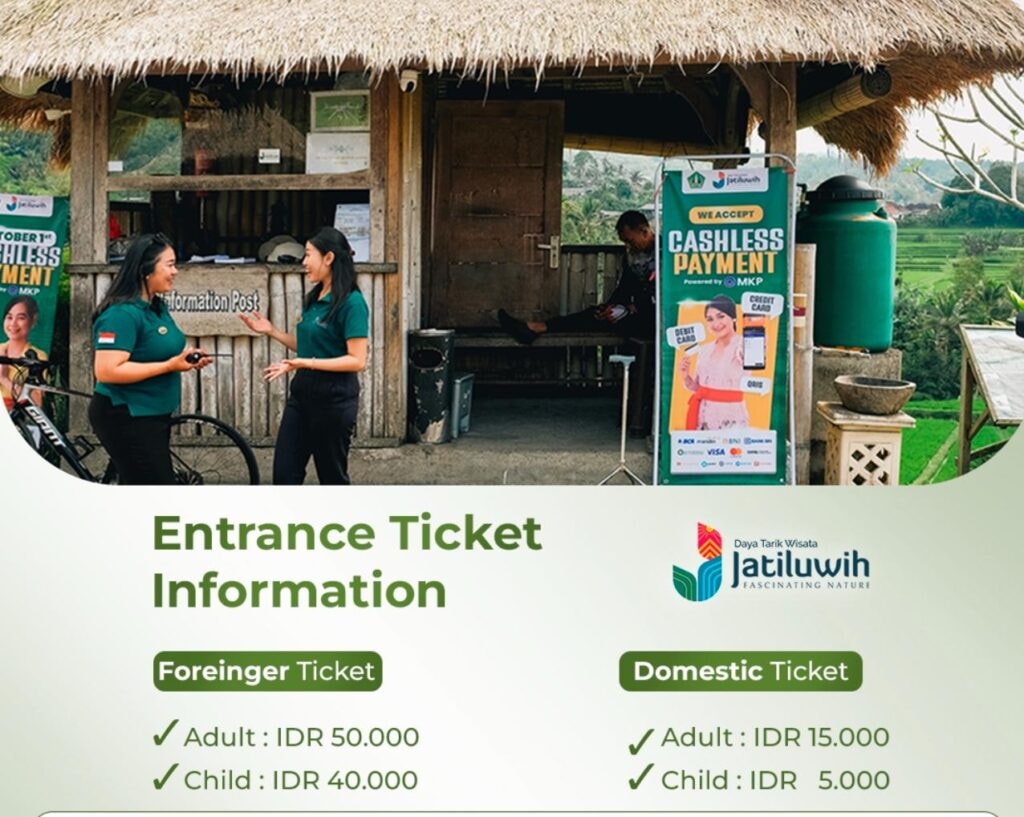
Source: jatiluwih.id
The Jatiluwih Rice Terraces are open to visitors from 8am to 6pm, with the latest entry allowed at 5 pm. This schedule gives you ample time to explore the area, whether you’re planning a quick visit or a full-day excursion. Make sure to plan your trip accordingly to maximise your time in this breathtaking landscape.
The entrance fee for the terraces is 50,000 IDR, granting access to the entire area. If driving, a small parking fee of 5,000 IDR is required.
What Makes Jatiluwih Rice Terraces Unique?
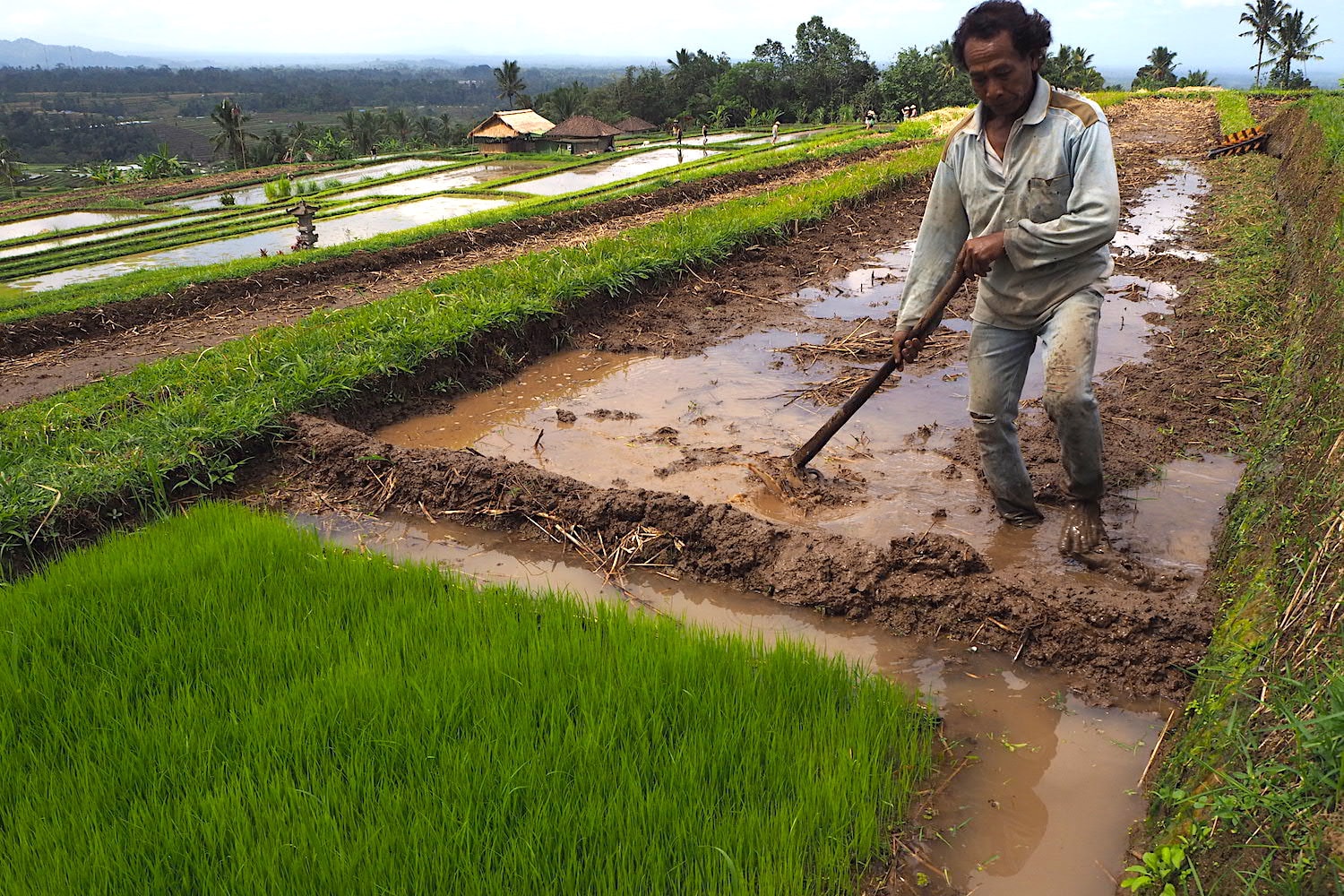
Source: whatsnewindonesia.com
Jatiluwih rice terraces are a UNESCO Cultural Landscape, showcasing a harmonious blend of cultural and natural elements. The beautiful rice terraces are irrigated by Bali’s complex irrigation system, a traditional Balinese irrigation method dating back to the 9th century, reflecting the island’s rich history, agricultural ingenuity and community-based approach to farming. The vast expanses are a testament to this rich heritage and Bali’s culture.
One of the most striking features of Jatiluwih’s green land is its panoramic views of terraced landscapes set against rolling hills. The green rice paddies stepped along the hillside offer a stunning visual spectacle that changes with the seasons. Whether you’re there during the lush green growing season or the golden harvest period, the scenery is always breathtaking.
Visitors can engage in a variety of activities, from hiking and exploring the local culture to simply soaking in the scenery. The terraces offer a peaceful retreat from the hustle and bustle of Bali’s more crowded tourist spots, providing a unique opportunity to connect with nature and experience the island’s cultural heritage.
Exploring Jatiluwih Rice Terraces
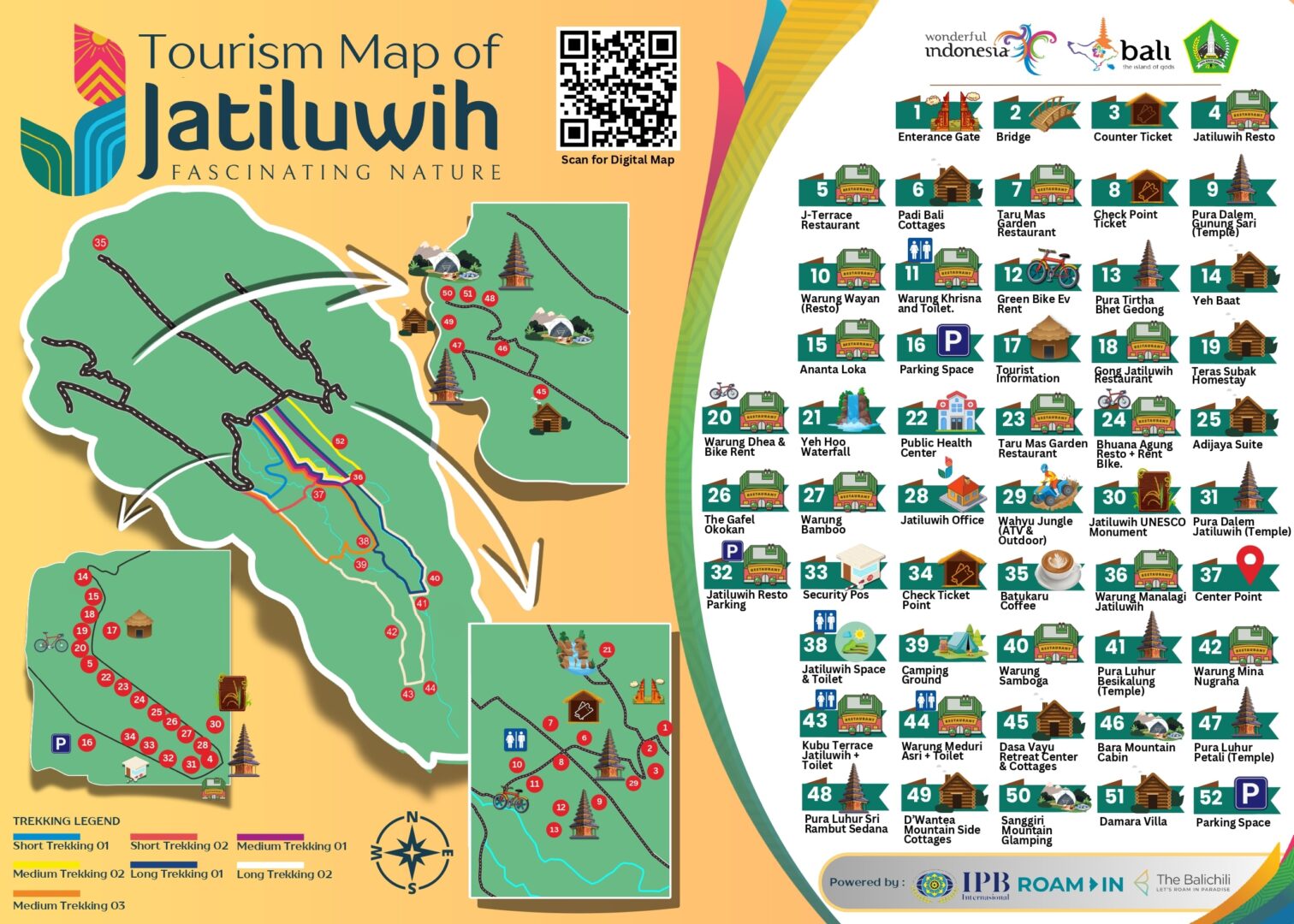
Source: jatiluwih.id
Exploring the Jatiluwih Rice Terraces is an immersive experience. As you wander through the rice fields, you’ll see local farmers tending to their crops, offering a glimpse into the local community’s daily life. The rice cultivated here includes white, brown, and black varieties, each with unique culinary and health benefits.
Whether you prefer trekking or cycling, Jatiluwih offers a range of activities to suit different interests. Guided cycling tours are available, providing insights into the agricultural practices and cultural heritage of the area. The terraces are less crowded than Tegallalang, making it a more tranquil and enjoyable experience.
Trekking Paths Through the Rice Fields
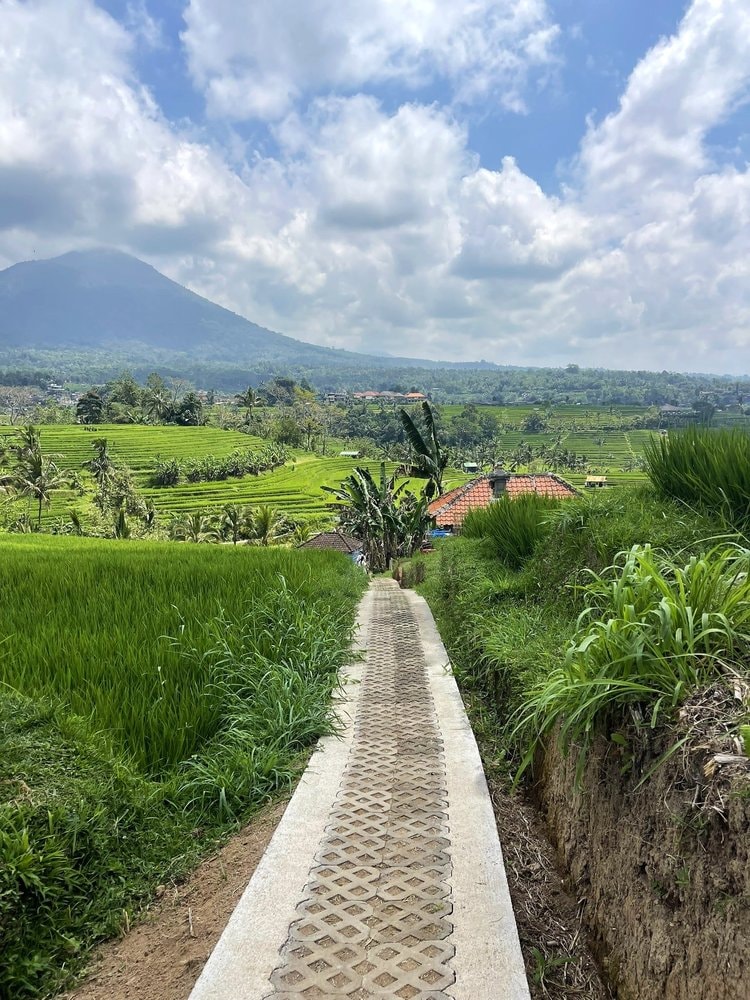
Source: girlgonecoconuts.com
The Jatiluwih Rice Terraces offer five colour-coded trekking routes, each designed to cater to different levels of hikers. From leisurely strolls to more challenging treks, there’s a path for everyone. First-time visitors with limited time should consider the red line, with the option to follow the purple line if time permits.
These paths immerse you in the landscape, allowing you to enjoy the flowing hillside topography and the peaceful atmosphere. As you trek, you’ll encounter irrigation paths and village cooperatives, providing a deeper understanding of the local customs and traditional methods preserved in this UNESCO World Heritage Site.
Cycling Tours
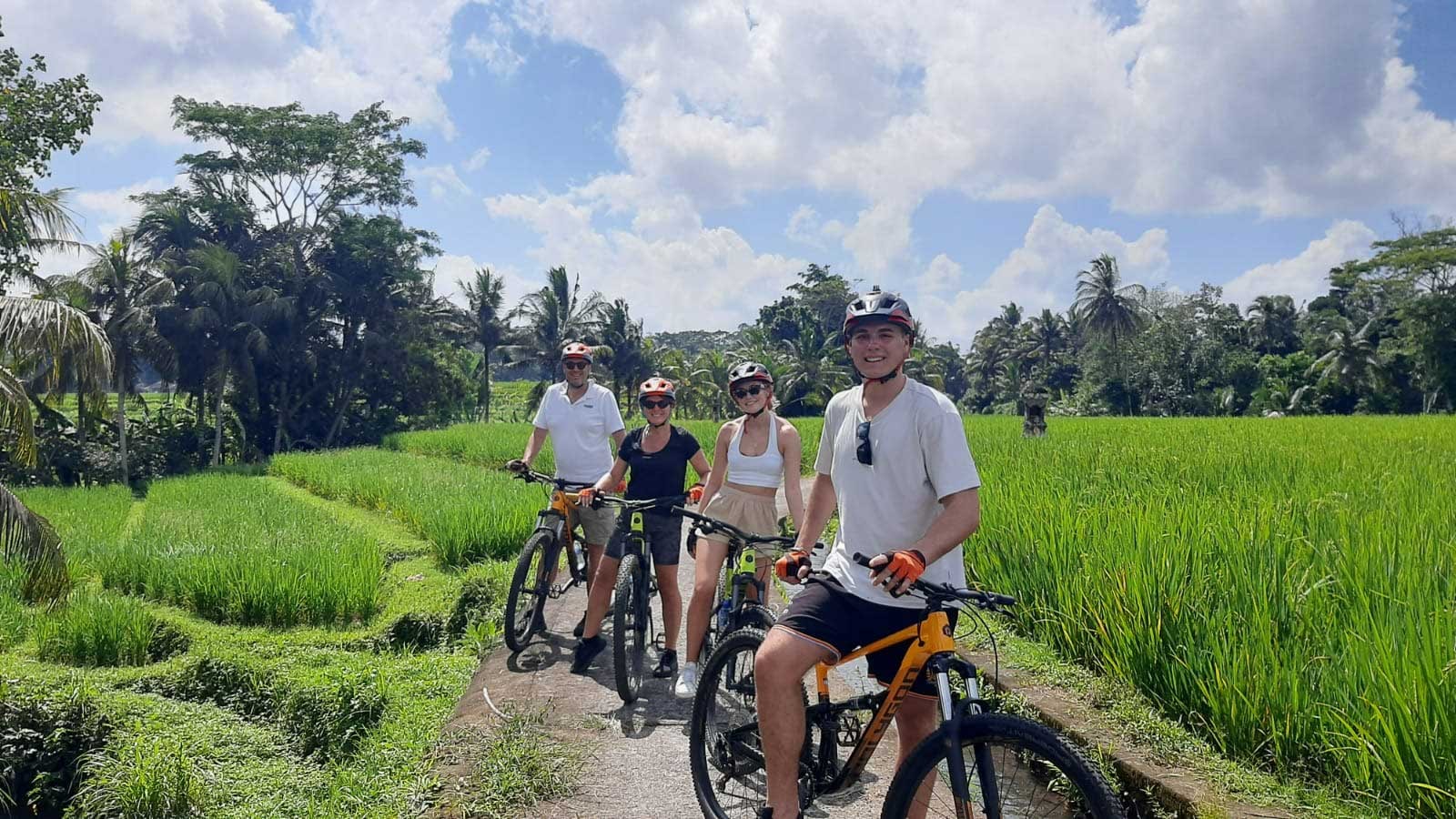
Source: infinitymountainbiking.com
Cycling through the Jatiluwih Rice Terraces is a safe and enjoyable way to explore the area. The lack of traffic makes it ideal for cycling, allowing you to fully appreciate the magnificent scenery and take in the fresh air without distractions. Guided tours are available and can be arranged through local tour operators.
These cycling tours offer a unique perspective on the terraces, combining physical activity with cultural exploration. As you pedal through the stunning rice fields, you’ll gain insights into the traditional agricultural practices of the Balinese people that have sustained the region for centuries.
Nearby Attractions
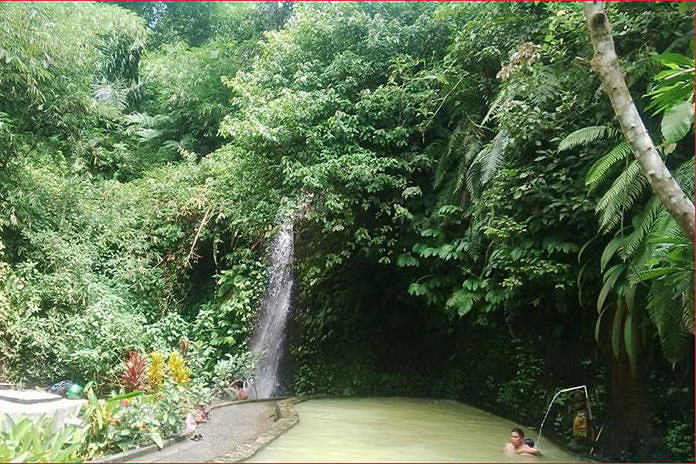
Source: balipost.com
While the Jatiluwih Rice Terraces are a destination in their own right, there are several nearby attractions that can enhance your visit. Located about 700 metres above sea level in the Penebel district of Tabanan Regency, Bali, the terraces are often included in full-day tours that also feature places like Batukaru Temple and the Alas Kedaton Monkey Forest to further explore Bali’s cultural landscape.
For those looking to extend their adventure, other nearby attractions include the Angseri Hot Spring and Tasta Zoo, both located in Tabanan. These spots offer unique experiences that complement your visit to the rice terraces.
Yeh Hoo Waterfall
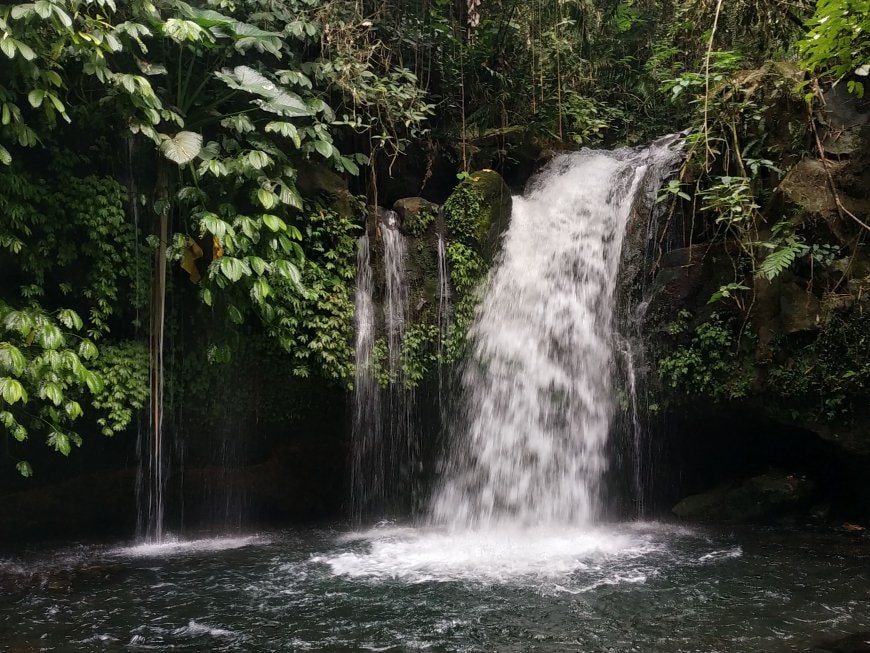
Source: budayabali.com
Yeh Hoo Waterfall is a hidden gem that offers a refreshing escape from the tropical heat. Located conveniently close to the Jatiluwih Rice Terraces, this waterfall is easy to access and perfect for a cooling dip in its natural pool.
The pleasant pool at Yeh Hoo Waterfall is ideal for bathing and relaxation, making it a must-visit spot for those exploring the Jatiluwih area. The sound of cascading water and the surrounding natural beauty create a serene atmosphere that enhances your overall experience.
Batukaru Mountain Range
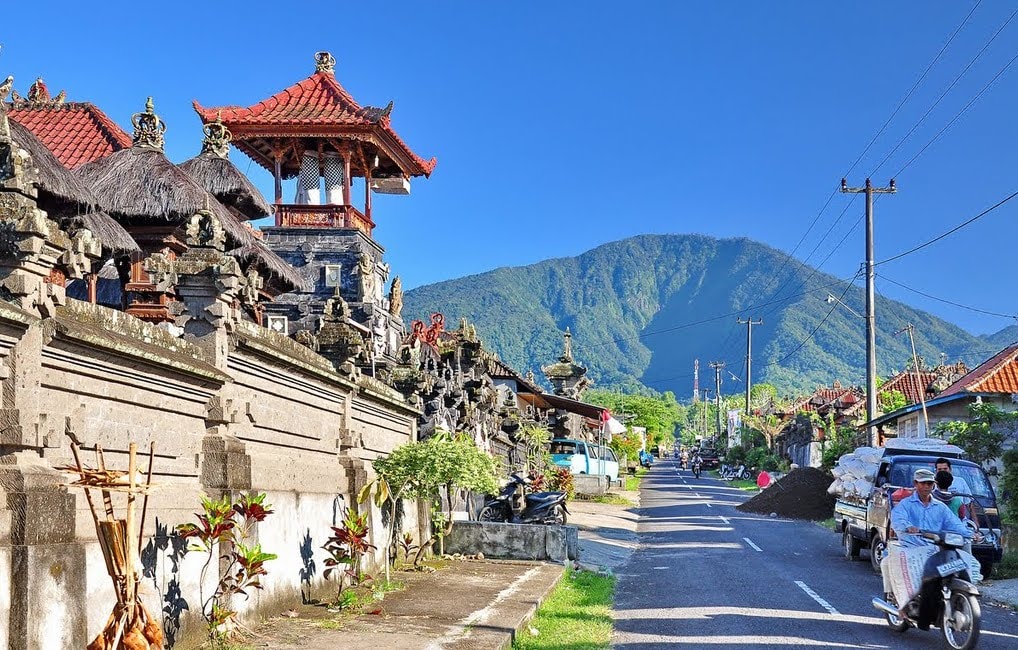
Source: thinkbali.com
The Batukaru Mountain Range offers beautiful trekking routes that attract nature lovers and adventure seekers. This mountain is easier to climb compared to many others in Bali. As a result, it is accessible to a wide variety of trekkers. The cool mountain air and stunning views make for an unforgettable trekking experience.
Pura Luhur Temple, located within the Batukaru Mountain Range, holds cultural significance as a place of worship and is an integral part of the spiritual landscape, combining sacred traditional values. Visiting this temple provides a deeper understanding of Bali’s cultural and spiritual heritage.
Dining Options Near Jatiluwih Rice Terraces
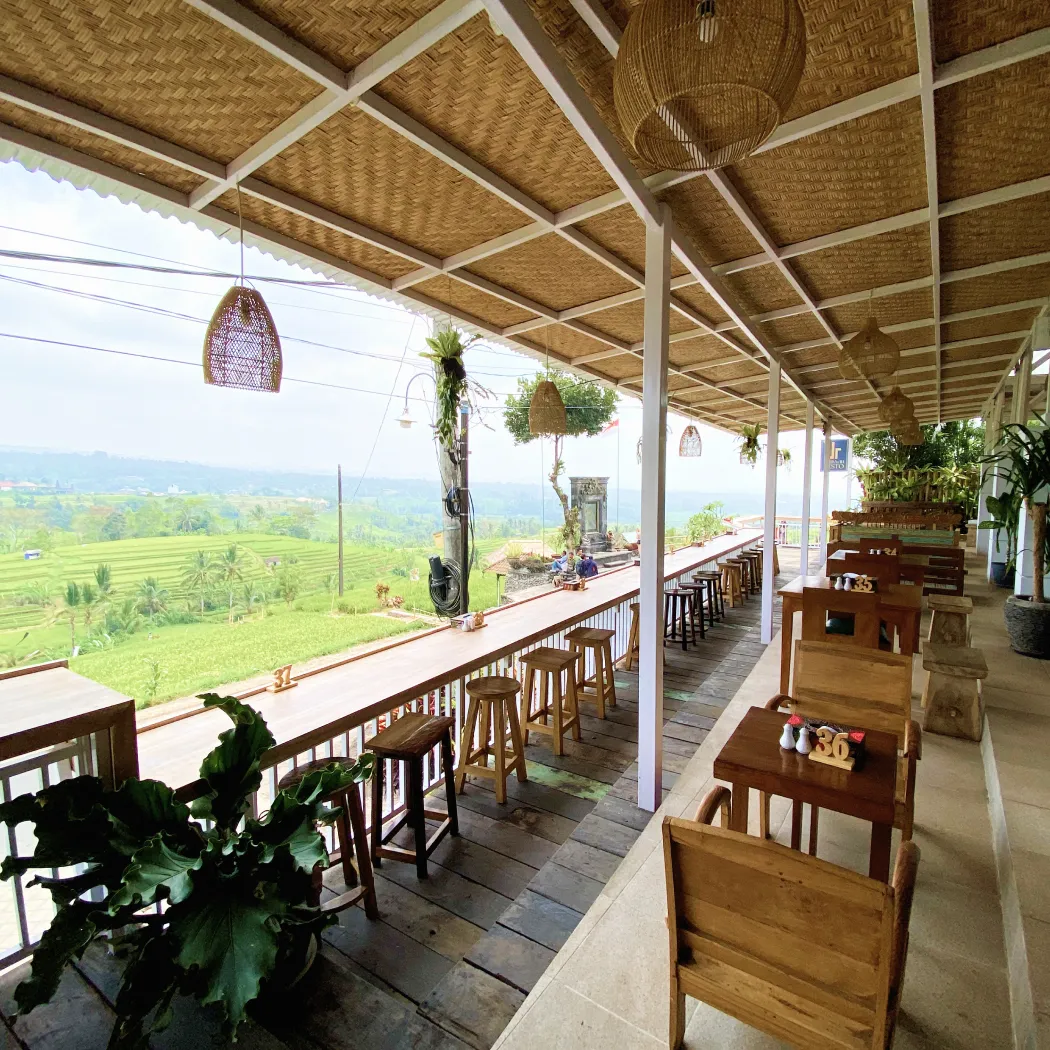
Source: Jatiluwih Restaurant
The area around Jatiluwih Rice Terraces offers various dining options featuring local Balinese cuisine. For a more authentic and reasonably priced meal, seek out smaller warungs. Warung Dhea is particularly popular for its Black Rice Pudding, which many guests find delicious.
Other dining spots, like Warung Bubur Betutu Beras Merah Jatiluwih, serve local meals made with the Indonesian archipelago’s staple food, locally grown rice. Whether you prefer a buffet or à la carte options, these eateries offer a variety of dishes.
Accommodation Options
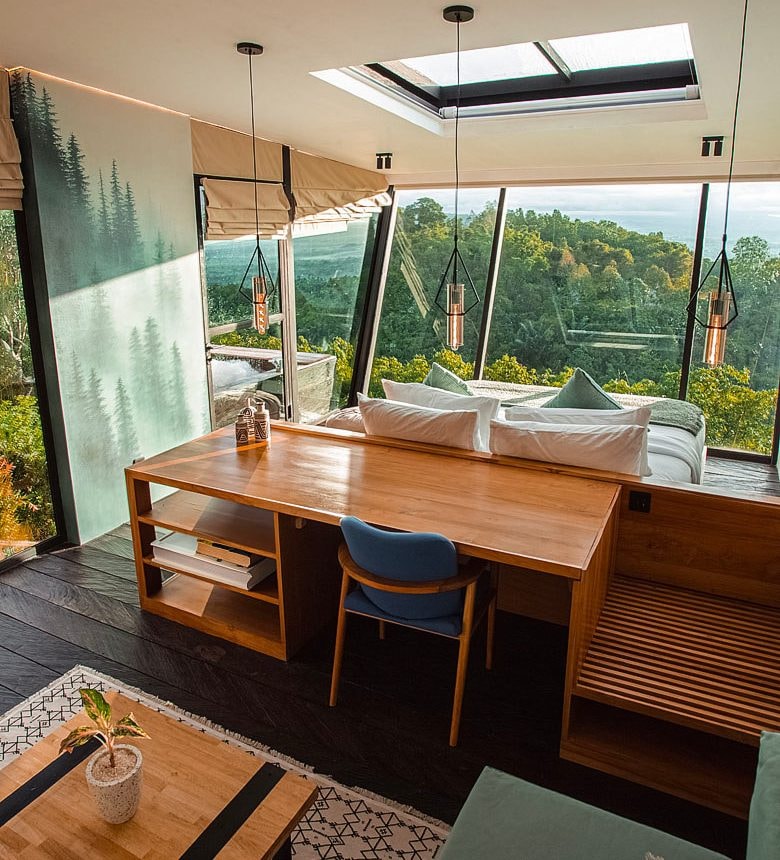
Source: auroracabinsbali.com
There are plenty of accommodation options near the Jatiluwih Rice Terraces to suit different budgets and preferences. For budget travelers, Dina Home Stay offers affordable rooms starting at around $20 per night. Kubu D’Ume Homestay is well-regarded for its friendly hosts and ability to arrange local tours for guests.
For those seeking a more luxurious experience, Sang Giri Mountain Glamping Resort offers comfortable tents, amazing views, and a range of activities, along with an onsite restaurant. Whether you prefer a homestay or a glamping experience, you’ll find a variety of accommodation that provide a comfortable and memorable stay.
Comparison with Tegallalang Rice Terraces
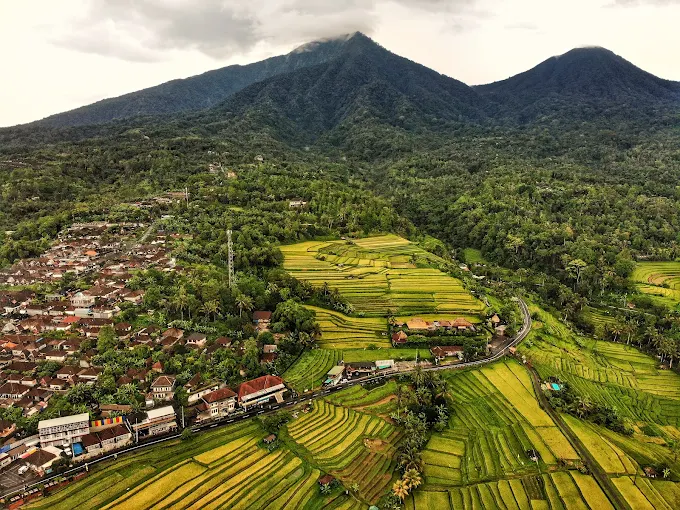
Source: Monika
While both Jatiluwih and Tegallalang Rice Terraces offer stunning views, they provide different experiences. Jatiluwih features over 600 hectares of rice fields that adapt to the natural contours of the entire mountain range, making it less accessible but more expansive and tranquil. In contrast, Tegallalang is very easy to access and often crowded, making it ideal for a quick visit.
The entrance fee for Jatiluwih is slightly higher at 50k IDR compared to Tegallalang’s 25k IDR, but the additional cost is well worth it for the serene and immersive experience it offers. If you prefer a quieter, more extensive exploration, Jatiluwih is the better choice.
How to Book Your Trip
Booking your trip to Jatiluwih Rice Terraces can be seamless and stress-free with the right travel agency. Booking with Bali Res Centre ensures you receive expert knowledge and personalised service.
Whether you’re planning a day trip or a longer stay, booking through a reliable agency like Bali Res Centre can enhance your overall experience, arranging transportation, guided tours, and even accommodation, allowing you to fully enjoy your visit without the hassle of planning every detail yourself.
Summary
The Jatiluwih Rice Terraces offer a unique and enriching experience that combines natural beauty with cultural heritage. From the stunning panoramic views and the ancient Subak irrigation system to the various activities and nearby attractions, there’s something for everyone to enjoy. Whether you’re trekking through the terraces, cycling, or simply soaking in the serene environment, Jatiluwih provides an unforgettable experience.
We hope this guide has inspired you to visit Jatiluwih and explore all it has to offer. By planning your trip well and immersing yourself in the local culture and natural beauty, you can create lasting memories of this remarkable destination. So, pack your bags, book your trip, and get ready to discover the best way to enjoy the awe inspiring beauty of Jatiluwih Rice Terraces in Bali!
Frequently Asked Questions
What is the best time to visit Jatiluwih Rice Terraces?
The best time to visit Jatiluwih Rice Terraces is from February to April for lush green paddies during rice growing season. The harvest season occurs in May and June when the fields of rice plants are golden. Plan your trip around these months to experience the stunning landscapes and enjoy magnificent sceneries.
How do I get to Jatiluwih Rice Terraces?
The best way to get to Jatiluwih Rice Terraces is to hire a private car with a driver for flexibility and comfort. However, you can also rent a scooter or book an organised tour if you prefer. Choose what suits you best and enjoy the stunning views.
What are the opening hours and entrance fees for Jatiluwih Rice Terraces?
Jatiluwih Rice Terraces are open daily from 8am to 6pm, and the entrance fee is 50,000 IDR with an additional parking fee of 5,000 IDR. Make sure to have some cash on hand for your visit.
Are there any nearby attractions worth visiting?
Definitely check out Yeh Hoo Waterfall and the Batukaru Mountain Range nearby; they provide stunning views and great activities to enjoy.
What accommodation options are available near Jatiluwih Rice Terraces?
You’ll find a mix of budget homestays, like Dina Home Stay, and upscale glamping resorts, such as Sang Giri Mountain Glamping Resort, near Jatiluwih Rice Terraces. There’s something for every traveler’s taste and budget.



